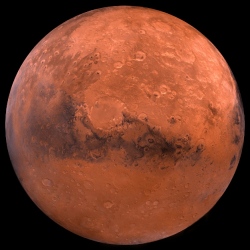
In ancient times, Gale Crater rippled with the fresh, blue water of a large lake. Now it’s a 90-mile-wide hole in the red Martian surface. Its water is gone, but the sediments it left behind contain clues about when and where the planet might once have been hospitable to life. The Curiosity rover has been searching for those clues since 2012.
Rambling around Gale Crater and inching up the 3-mile-high Mount Sharp at its center, Curiosity is studying the layers of rock that the lake laid down over time.
Today, a new analysis of the rover’s findings reveals the red planet had the physical, chemical, and energetic ingredients to support life between 3.8 and 3.1 billion years ago. That’s right around the time that life got started on Earth, and it’s a larger window than scientists previously assumed.
A window into the past
Geochemist Joel Hurowitz from Stony Brook University led a large team that scrutinized the chemical contents in 100 meters of rock layers in Gale Crater. The chemicals within the rocks indicate what sorts of conditions they formed under.
To reconstruct the red planet’s past climate, Hurowitz and his team measured how much aluminum each layer contained, versus minerals like sodium and calcium which easily leach out of the rock.
During warm conditions, water is better at dissolving and chemically modifying rocks. So if a rock layer has a lot of aluminum but not much sodium or calcium, that indicates it formed under warm conditions. Cold water isn’t as chemically active, so a rock layer with a higher abundance of sodium and calcium suggests the layer formed under warm conditions.
The rocks suggest that Mars was initially cool, and then became warm and wet. Eventually it dried out due to a cataclysmic loss of its atmosphere, but the new results indicate that Mars’ mild climate was longer-lived than scientists expected.
